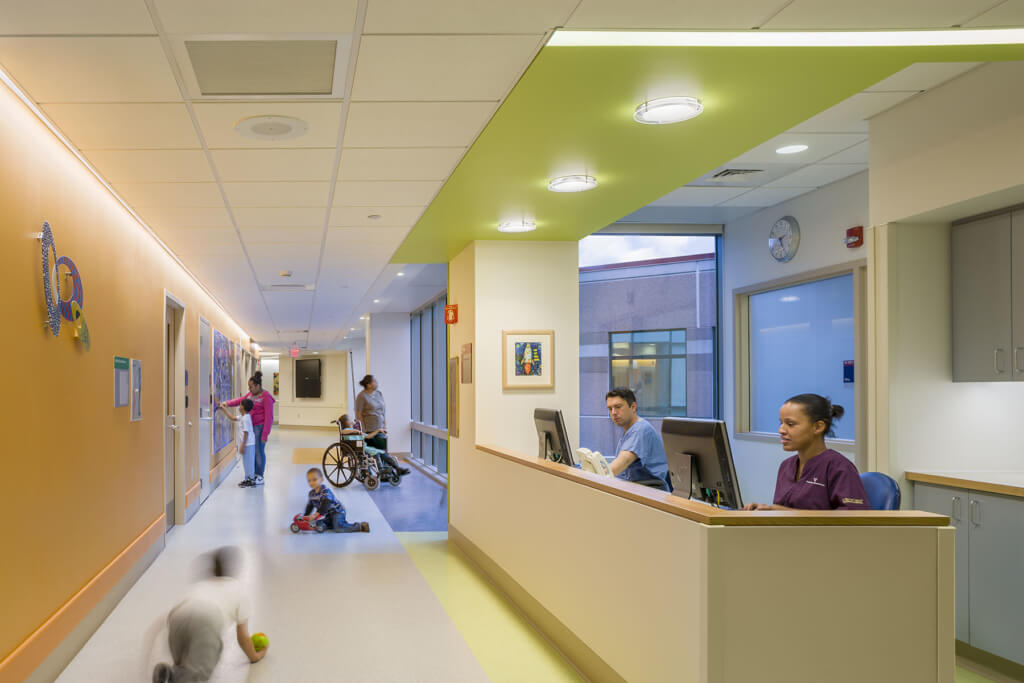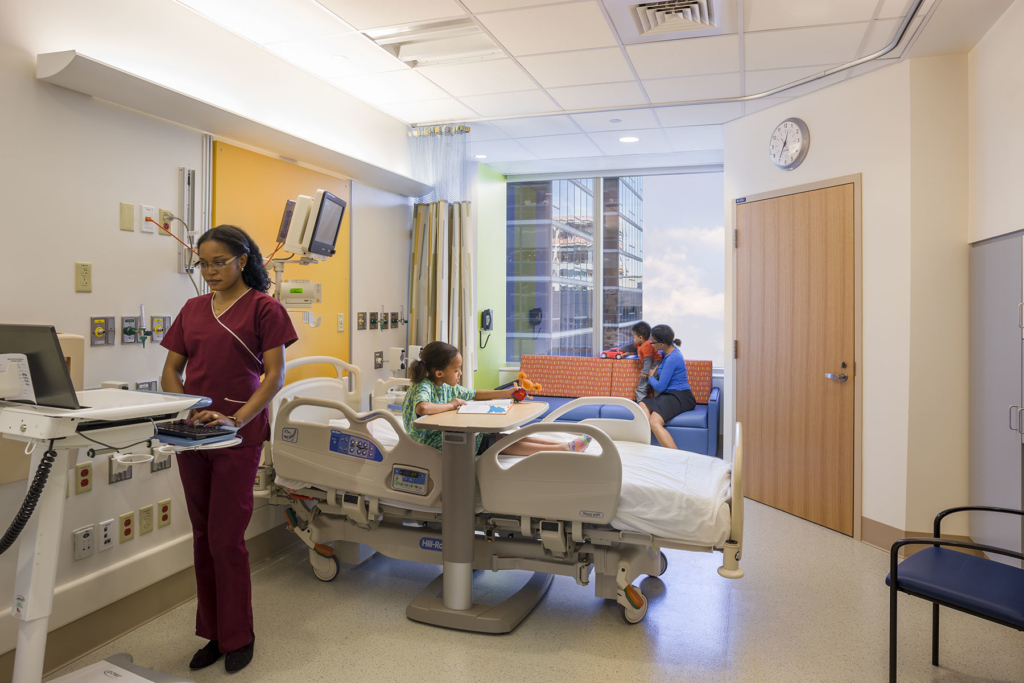We often talk about the fast pace of change in healthcare architecture. Both on the facility design and clinical side, change is ever-present. When I reflect on the last 30 years of my career, I can now see that many of the trends have been consistent for a long time. Concern for aging baby boomers; move from inpatient to outpatient care; the rise of technology in clinical practice; and a commitment to patient-centered care. Even with the rapidly evolving US healthcare environment, a gradual transformation of hospital design reveals a changing relationship between Americans and their healthcare.
In 2011, the first baby boomers began to hit retirement age. There has long been a concern for the impact of this population shift. As boomers age, they have more health concerns and greater engagement with the healthcare market. Situations that were prevalent and acceptable in the past are no longer viable – for example, multi-bedded rooms in inpatient care, ambulatory services limited to standard office hours, and crowded waiting rooms with long waits. Today’s patients and their employers demand more of the system – care needs to be accessible, convenient and timely.

Reducing the impact and the cost of health events has long been a trend in the US with the length of stays in hospitals significantly reduced, and much of our care is moving out of the hospital and into the ambulatory care arena, particularly in surgery. Bringing healthcare to the patient to eliminate the logistics of traveling to and around large inpatient health centers has been a continuous trend for decades. Advancements in medicine have supported this trend with increasingly less intervention and anesthesia required for routine surgery.
Patient-centered care is a current buzz-word; however, we have been talking about this since the 1980s. In an AIA publication of 1986 Health Facilities Review the authors note, “From hospitals to outpatient clinics, facilities respond to the patient as consumer – a buyer of services who is educated and sophisticated in taste.” This furthers the idea that patients can choose the site of their care and that they will do so based on the perceived value of that care.
Today, reimbursement levels are now affected by patient satisfaction scores that include mention of the physical environment. Two movements have reinforced the transformation to patient-centered care. First, the Planetree Model, developed in the 1980s, emphasizes a sensitive and humane approach to design focused on patient control and satisfaction.
Secondly, the emergence of Evidence-Based Design has supplemented intuitive architectural responses to ones based on research and the research has shown what was once thought of as luxuries; private rooms with a view, family rooming-in and quiet environments, have influence on reducing a patient’s length of stay and thus the bottom-line in delivering that care. This new body of research informs much of healthcare design to the benefit of the patient.

In addition to changing perceptions on how patients are treated, there are other trends which greatly affect the patient experience. Slowly, American hospitals are transitioning to electronic medical records (EMRs). People have been predicting paperless hospitals for a long time, and perhaps underestimated the logistical challenges involved in the process, but we are finally starting to see health systems with robust and interconnected intelligence systems. EMRs are key to integrating healthcare service across different providers and providing transparency to patients regarding their own medical record. It is a necessary step towards telemedicine and digital access between medical providers and their patients. The EMR allows the collection of data and sophisticated analytics to inform population health statistics.
The last trend, which is both long-lasting and significant to patients, is the focus on safety. Safety comes in many forms. First, there is a national effort to reduce the quantity of Hospital Acquired Infections (HAIs), which have caused much alarm in the national news. Under new reimbursement models, insurance will not cover the cost of an HAI. Instead, providers must cover the cost. Infection control continues to influence hospital design and operational procedures. Infection control is affected by HVAC design, finishes and construction details. It is also critically important to ensuring safety during construction.
The other important safety focus is the movement to reduce slips and falls. Too often, patients are injured ambulating around their rooms. Both nursing and the design industry are focusing on how to best prevent injuries. This movement also extends to keeping staff ergonomically safe with the installation of patient lifts, among other measures.
These trends began decades ago and continue to shape our thinking about healthcare architecture. While the hospital is still an essential feature in the healthcare system, much of the care has moved outside the hospital walls. Decentralized ambulatory care is enabled by EMRs and supported by clinical advancements. An emphasis on patient-centered care is stronger today with support from new reimbursements metrics. Safety continues to be an important trend, and as we track data on HAIs and slips and falls, we look to improve patient experience. Americans are taking more personal control of their healthcare, and this is reflected in our design trends. As personalized medicine becomes more common, we will see these trends continue as healthcare becomes more about the individual patient and his or her specific needs and less about the institution and providers.


